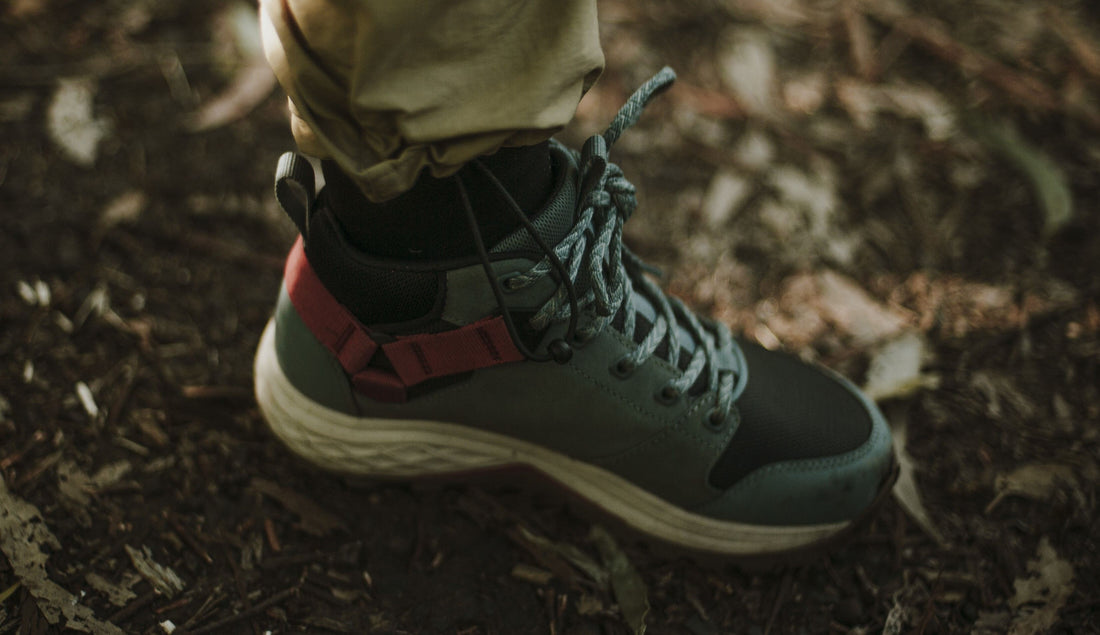
How to Care for Your Hiking Boots
Share
How to Care for Your Hiking Boots
If you’ve ever shelled out for a good pair of hiking boots, you’ll know — they’re an investment. And while most boots are built to handle mud, rock scrambles, and creek crossings, they still need a bit of TLC to stay comfy, supportive, and trail-ready for the long haul.
We’ve seen boots give up halfway through a hike (it’s not fun), soles peel off in the middle of a multi-day, and waterproofing vanish after one season — all because they weren’t cared for properly.
Here’s how to make sure your boots go the distance.
1. Clean Them After Every Hike (Yes, Every Time)
We know — it’s tempting to chuck your boots in the garage and forget about them after a long day. But dirt, grit, and moisture break down the materials faster than you’d think.
- Brush off mud, sand, and leaves with a soft brush or cloth
- Rinse gently with water if needed — avoid soaking
- Remove the laces and insoles for a proper clean and to let them dry out fully
Don’t use harsh soaps or high-pressure hoses — they can strip waterproof coatings and damage stitching.
2. Dry Them Out Properly
Wet boots are uncomfortable and a breeding ground for mould and smells.
- Let boots air-dry naturally, out of direct sun
- Never dry them near a heater, fire, or in a hot car — it can crack leather and weaken glue
- Stuff them loosely with newspaper or a dry tea towel to speed up drying and absorb moisture
We rotate our insoles every few hikes and let them air overnight, even if the boots seem dry.
3. Reapply Waterproofing as Needed
Most boots come pre-treated with waterproofing, but it wears off over time — especially if you’re walking through creeks or constantly brushing against wet vegetation.
- Use a spray-on or rub-in waterproofing treatment designed for your boot’s material (leather, suede, synthetic, or Gore-Tex)
- Reapply every few months or after particularly wet hikes
- Always clean boots before waterproofing
A quick waterproof test: sprinkle water on your boot. If it soaks in instead of beading off, it’s time to re-treat.
4. Look After the Laces and Eyelets
Don’t underestimate the power of a good lace-up. Loose, worn, or broken laces can make your boots uncomfortable — or unusable on the trail.
- Check for fraying and replace before they snap
- Keep an eye on metal eyelets or hooks — if they’re rusting or pulling away, get them repaired before a long hike
- Don’t yank too hard when tightening — it damages eyelets over time
Carry a spare pair of laces in your pack, especially on longer or remote hikes.
5. Store Them Right
Your boots deserve better than the back of a damp shed.
- Store in a cool, dry place away from direct sunlight
- Don’t keep them in their original box long-term — they need airflow
- Avoid sealed plastic containers (trapped moisture = bad news)
Use a boot bag with ventilation if you need to keep them in the car or cupboard.
6. Occasionally Give the Insoles Some Love
Insoles absorb a lot — sweat, impact, and uneven pressure. They wear out quicker than the rest of the boot but are easy to replace.
- Take them out after every hike to dry
- Wash gently by hand if they’re starting to smell
- Replace if they’re compressed, cracked, or not giving you proper support
You can buy replacement hiking insoles separately — and sometimes a better one than what your boots came with.
7. Don’t Ignore Small Issues
A bit of peeling, cracking, or loose stitching might seem minor — until your sole completely separates three kilometres from the car. Stay ahead of problems.
- Glue small sole lifts with shoe-specific adhesive
- Get a cobbler to resew or reattach parts if needed
- Check the midsole (the squishy part between sole and boot) for signs of breakdown — this can cause foot pain over time
Most major outdoor stores or boot brands offer repair advice or services — use them!
Final Thoughts
Good boots should last you many seasons — but only if you return the favour. Clean them, dry them, check them, and they’ll keep carrying you up trails, down gullies, and over rocky ridgelines for years.
And let’s be honest — there’s something kind of nice about having a pair of boots that’s been with you through it all. Mud-stained, well-loved, and still holding strong.